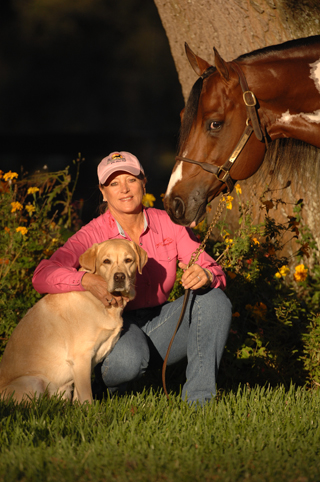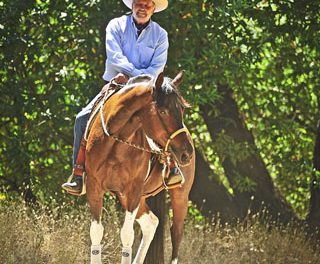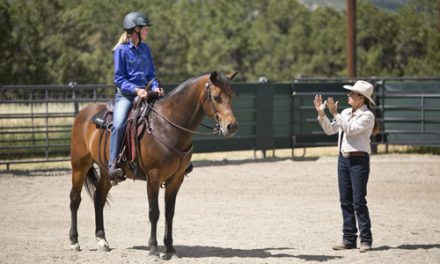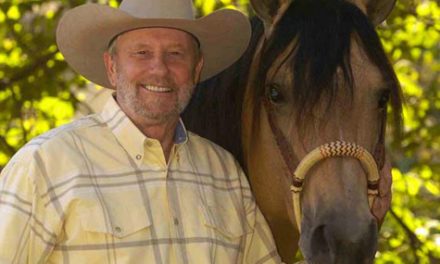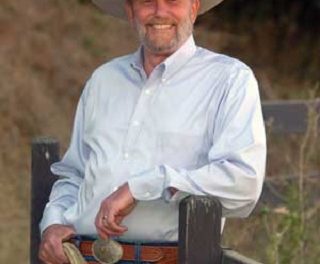Palm Partnership Training
 So you want to get involved in Western Dressage, but aren’t sure if you have the proper tack and attire. Not to worry! You’ll be glad to know you don’t need special tack, equipment or rider attire in order to show in this new discipline.
So you want to get involved in Western Dressage, but aren’t sure if you have the proper tack and attire. Not to worry! You’ll be glad to know you don’t need special tack, equipment or rider attire in order to show in this new discipline.
Your Western saddle, headstall and reins may be used. Riders can perform the tests in either a standard western snaffle bit, which is defined in the current USEF rule book, or in a standard western bit which is also defined there.
According to the Western Dressage Association of America’s (WDAA) website (www.westerndressageassociation.org), “the WDAA will request a change in the USEF rules regarding bits. The WDAA will request changes which will require, at the lowest test levels, the use of a snaffle bit only, along with a cavesson which is loose enough to permit two fingers comfortably between the cavesson and the horse’s nose.”
Rider attire should be “conservative and workman-like.” I interpret this as a well-shaped hat to fit your features, a starched long-sleeve shirt and choker scarf tie, tied with a square knot and the same color chaps as your pants, and western boots.
Don’t be concerned if your tack is basic. When it comes to Western Dressage, judges are seeking conservative ranch or schooling equipment. This means no silver, a Navajo blanket under the saddle, a breast collar if your horse needs it, bridle browband or two-ear, snaffle or curb bit, curb chain or leather strap, and western split or romal reins.
Keep in mind that a Western Dressage horse is expected to work with lighter contact than the traditional dressage horse. Balance, cadence and carriage are still important, but judges will evaluate horses based on the conformation and movement found in today’s Western horses. Horses are asked to walk, jog and lope instead of walk, trot and canter.
As stated on the WDAA website: “It is not the goal of Western Dressage to create western horses that compete in open dressage but to create better western horses and riders through the use and principles of dressage.
“Western Dressage is trained and shown in specific levels which build on each other and which reflect the development of the skills and abilities of both the horse and rider. The tests ridden in shows are used as a measure of the correctness of the horse’s (and rider’s) schooling.”
Here are the areas judges will be looking at closely:
-
- Gaits: Does the horse move freely and with regularity?
- Impulsion: Does the horse show willing forward movement with roundness and elasticity?
- Submission: Does the horse exhibit confidence and acceptance of the bit? Does the horse show harmony with rider and overall lightness of movement?
- Rider’s position and seat: Does the rider have correct position and is he/she able to be effective with the aids?
If you have an interest in Western Dressage, the hottest new discipline, please send me a photo of you and your horse so we can put this up on our web site, www.QuarterHorsesInDressage.com. We welcome all breeds. If you need some help or would like me to evaluate your riding attire or tack, please email me at generalinfo@lynnpalm.com with photos, and I would be more than happy to help.
If you are interested in the new Western Dressage book I am doing, please send us an address, and we will forward information about attire for Western Dressage, along with details on how to order the book.
We would love to have you come ride with us. We love to share our dressage backgrounds and knowledge with you. You can join us at our Ocala, Florida, farm or at one of our Ride Well Clinics on our USA Tour at a location near you.
If you would like to train with Lynn & Cyril at home with Western Dressage, take advantage of the following supportive training materials:
Books:
-
-
- Head To Toe Horsemanship
- Western Dressage—A Guide to Take You to Your First Show
- A Rider Guide to Real Collection
-
DVDs:
-
-
- “Dressage Principles for the Western Horse & Rider” Volume 1 Parts 1-5
- “Dressage Principles for the Western & English Horse & Rider” Volume 2,Parts 1-3
- “Let Your Horse Be Your Teacher” Parts 1&2
-
For more information on these training materials and more, as well as clinics, please visit www.lynnpalm.com or call us at 800-503-2824.

